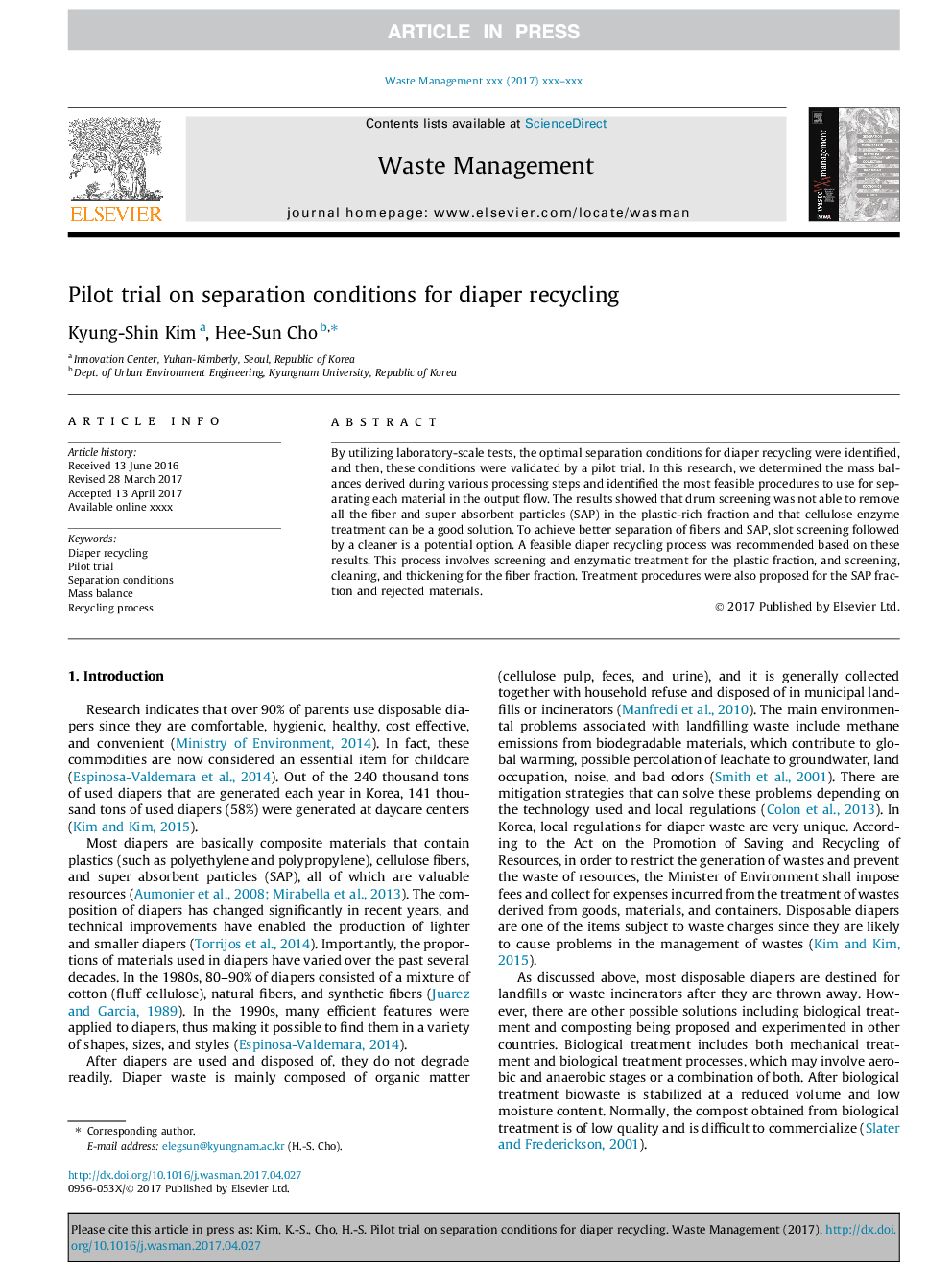| Article ID | Journal | Published Year | Pages | File Type |
|---|---|---|---|---|
| 5756635 | Waste Management | 2017 | 9 Pages |
Abstract
By utilizing laboratory-scale tests, the optimal separation conditions for diaper recycling were identified, and then, these conditions were validated by a pilot trial. In this research, we determined the mass balances derived during various processing steps and identified the most feasible procedures to use for separating each material in the output flow. The results showed that drum screening was not able to remove all the fiber and super absorbent particles (SAP) in the plastic-rich fraction and that cellulose enzyme treatment can be a good solution. To achieve better separation of fibers and SAP, slot screening followed by a cleaner is a potential option. A feasible diaper recycling process was recommended based on these results. This process involves screening and enzymatic treatment for the plastic fraction, and screening, cleaning, and thickening for the fiber fraction. Treatment procedures were also proposed for the SAP fraction and rejected materials.
Related Topics
Physical Sciences and Engineering
Earth and Planetary Sciences
Geotechnical Engineering and Engineering Geology
Authors
Kyung-Shin Kim, Hee-Sun Cho,
